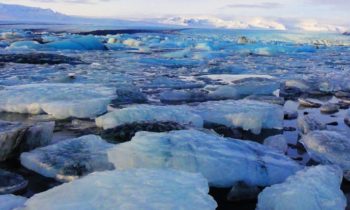 The environment in the Arctic region is now changing significantly due to increased temperature, thinning and decrease of the sea ice, melting of the Greenland Ice Sheet, thawing permafrost and changes in atmosphere and ocean circulation.
The environment in the Arctic region is now changing significantly due to increased temperature, thinning and decrease of the sea ice, melting of the Greenland Ice Sheet, thawing permafrost and changes in atmosphere and ocean circulation.
Such changes have global as well as regional implications, including e.g. natural hazards, extreme weather, sea level change, coastal erosion and changes in the ecosystem. These changes have severe impact on people’s living conditions in the Arctic. Furthermore, exploitation of resources, marine transportation and other human activities are expected to increase with additional impact on the vulnerable environment. In order to ensure sustainable development of the Arctic it is necessary to collect more data and build up more knowledge on climate and environment in this region. On this background 110 polar scientists are gathered this week in Bergen, Norway to kick-‐off a new EU Horizon2020 project INTAROS -‐ Integrated Arctic Observation System.
The Nansen Environmental and Remote Sensing Center in Bergen, Norway and professor Stein Sandven is coordinating the INTAROS: Integrated Arctic Observation System Horizon2020 project awarded under EU call for Blue Growth. INTAROS is one of four projects included in EU´s efforts for increased focus on the Arctic and is an important contribution to the implementation of EU´s Arctic Strategy during the next five years. Also, the first ever Arctic science ministerial held in 2016 concluded in a Joint Statement on increased international collaboration on Arctic science and was signed by 25 nations and the European Union.
INTAROS will accordingly develop an efficient integrated Arctic Observation System by extending, improving and unifying existing and evolving systems in the different parts of the Arctic. The project will capitalise on existing observing systems and databases of atmosphere, ocean, cryosphere and terrestrial data as the backbone of the INTAROS Integrated Arctic Observation System. The project will combine existing distributed data repositories with the new observations gathered and provide tools for data discovery, aggregation, analysis and visualisation. A seemless information platform will facilitate easy access for users and stakeholders for a better understanding of the environmental changes in the Arctic.
INTAROS will also install new and dedicated instrumentation to measure physical, chemical, biological and ecological parameters for the atmosphere, ocean, cryosphere, and terrestrial environment. These measurements will fill information gaps complementing remotely sensed data and improving model predictions for the Arctic. The project will implement and demonstrate applications combining information from local and scientific observation systems to support decision-‐makers and stakeholder on implementation of sustainable management in the Arctic.
The international cooperation within and beyond Europe will be essential for the outcome of the project. A Pan-Arctic forum will be set up to support formulation of agreements and collaboration across EU member states, non-EU countries and transnational organisations. At the start of the project, INTAROS brings together expertise from 49 partner organisations in 20 different countries in Europe, North America and Asia with the long-‐term goal to implement an integrated sustainable Arctic Observation System for future generations.
